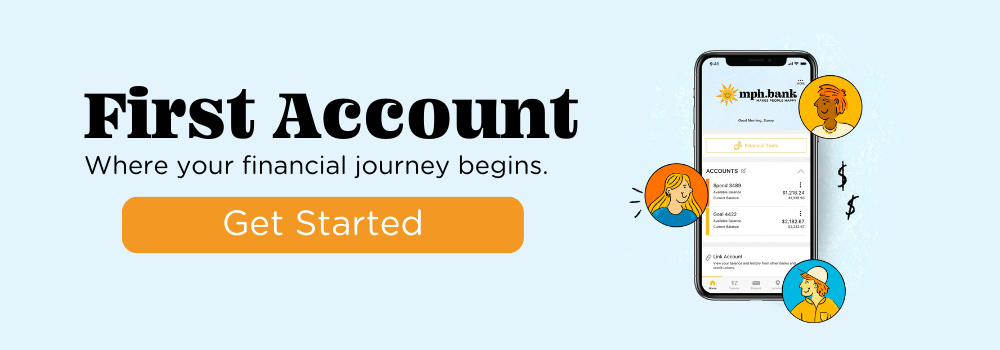You’re 17, and the world of personal finance is finally opening up to you. You're ready to take control of your money. You’ve been hearing a lot about online banking – no long lines, no tedious paperwork, and everything at your fingertips. It sounds too good to be true, right? Well, it’s not. In fact, 17-year-olds across the country are jumping into online banking, managing their money with ease, and setting themselves up for financial success.
Related Article: College Student Looking For Financial Tips
But how exactly do you open your first online bank account as a 17-year-old? What do you need to know? What’s required? And how can you make sure your new account works for you – not the other way around?
You’re in the right place! Whether you’re looking for an account to manage your allowance, save for a car, or get your feet wet in the world of personal finance, this step-by-step guide will walk you through the process of opening an online bank account that’s perfect for a 17-year-old.
Step 1: Understand the Basics of Online Banking
Before you jump in and pick a bank, let’s take a moment to understand what online banking actually is. Unlike traditional banks that require you to visit a branch in person, online banks operate entirely on the web. Everything you do – from depositing checks to transferring funds – happens online or via a mobile app.
For a 17-year-old, this means convenience. You can check your balance, pay bills, and track your spending right from your phone or computer. You don’t have to worry about long waits at the bank or dealing with crowded tellers.
But there’s more to it than just convenience. Online banks often offer lower fees and better interest rates than traditional banks, which is a huge win when you’re trying to make the most of your money. Plus, many online banks come with features designed specifically for young people, like parental monitoring tools, which we’ll talk more about in a bit!
Step 2: Confirm the Age Requirements
Not every bank will let you open an account when you’re 17. Most online banks require you to be at least 18 years old to open an account independently. However, many banks offer what’s known as a “joint account,” where you and a parent or guardian can manage the account together.
If you’re under 18, you’ll likely need a parent or guardian to be listed on the account. They’ll have access to monitor your transactions, and they might be required to sign off on certain actions, like withdrawing large sums or making certain types of changes to the account.
So, before you get too excited about that shiny new app, check the bank’s age requirements. You’ll want to make sure they’re cool with you opening an account at 17!
Step 3: Gather the Necessary Documentation
Now, let’s talk paperwork. Don’t worry – this isn’t as complicated as it might sound. The documents you’ll need will vary by bank, but generally, you’ll need the following:
- Proof of Identity: This could be your state-issued ID, driver’s permit, or passport. Banks need to confirm your identity before they can let you open an account.
- Proof of Address: A utility bill, school mail, or anything that shows your name and current address will likely work.
- Social Security Number: This is a standard requirement for most banks. It’s necessary for tax purposes and helps the bank confirm your identity.
In some cases, you might also need a parent or guardian’s identification to verify their part in the joint account. Make sure to have these documents ready to go before you start the application process. Nothing kills the excitement faster than having to dig around for paperwork!
Step 4: Choose the Right Online Bank for You
Now comes the fun part: choosing the best online bank for your needs! There are so many options out there, so it’s important to take your time and pick the one that’s right for you.
Here are some factors to consider:
- No Fees (or Low Fees)
As a teenager, the last thing you want is to be hit with unnecessary fees. Look for an online bank that offers free checking accounts or low maintenance fees. Some banks even waive fees if you maintain a minimum balance, which can be a great option if you plan to save. - Parental Controls
If you’re opening a joint account, find out if the bank allows your parent to monitor your account activity. This feature can be useful for teaching you good financial habits while still giving you some independence. - Mobile App
You’ll want a bank with an intuitive and user-friendly mobile app. After all, you’ll likely be managing your account from your phone, so a well-designed app is crucial for checking balances, making transfers, and setting up alerts. - Interest Rates
If you’re planning to save money, look for a bank that offers a good interest rate on your savings account. Even small amounts can grow over time, so this is a feature worth considering. - ATM Access
Some online banks offer free ATM withdrawals at thousands of locations. Make sure the bank you choose has a network of ATMs near you, or offers reimbursement for out-of-network ATM fees.
Step 5: Complete the Application Process
Once you’ve chosen your bank, it’s time to apply! This is usually a quick and easy process, especially with online banks. You’ll start by filling out an application on the bank’s website or app. Be prepared to enter your personal information, such as your name, address, date of birth, and Social Security number.
During the application, you’ll likely be asked to upload photos of your identification documents. It’s a good idea to have these ready and in digital form before you start the process. The bank may also ask for a deposit to open your account, though many online banks require only a small minimum balance (or none at all).
Once you’ve submitted everything, the bank will review your application. This can take anywhere from a few minutes to a few days, depending on the bank. If everything looks good, you’ll get approved and can start using your new account right away!
Step 6: Set Up Your Account and Explore
Congratulations – you now have an online bank account! But before you start using it, take some time to explore the features and set things up.
Here’s what you should do next:
- Set Up Your Mobile App
Download the bank’s app on your phone and log in. Most banks offer helpful features like mobile check deposits, real-time transaction alerts, and budgeting tools, so make sure to explore all the options available to you. - Link Your Account to External Accounts
If you have other accounts (like your parent’s account), you may want to link them for easy transfers. This is also a good time to set up direct deposit for your paycheck, allowance, or other income. - Create Budgeting and Saving Goals
Many online banks have tools to help you set savings goals. You can start saving for big purchases, like a car or college, right from your account. Set up automated savings or round-up features to make saving easier!
Step 7: Use Your Account Wisely
Now that your account is all set up, it’s time to put it to work! Here are some tips for using your account wisely:
- Track Your Spending
Use the bank’s mobile app to keep an eye on where your money is going. This will help you stay on top of your finances and avoid any surprises when you check your balance. - Save Regularly
Even if it’s just a few dollars here and there, saving regularly is key to building good financial habits. You can set up automatic transfers to your savings account, or just put aside what you can when you can. - Avoid Fees
Be mindful of fees, especially for overdrafts or out-of-network ATM withdrawals. While online banks tend to have fewer fees than traditional banks, it’s still important to avoid unnecessary charges whenever possible.
You’re Ready to Go!
Opening your first online bank account as a 17-year-old is an exciting step toward financial independence. By following this guide, you’ve learned how to choose the right bank, what documents you need, and how to get started. You’re well on your way to managing your money and building good financial habits!
Remember, the world of personal finance is full of opportunities. Use this account to learn, grow, and prepare yourself for a successful financial future. Whether you’re saving for something special or just starting to learn how to budget, your new online bank account is the perfect tool to help you get there.
So go ahead, take that first step. Your financial future is in your hands!
What do fish use as currency?
Sand Dollars! Sign up to receive important information on banking, financial tips, and jokes like this directly to your inbox










